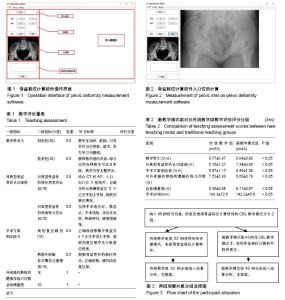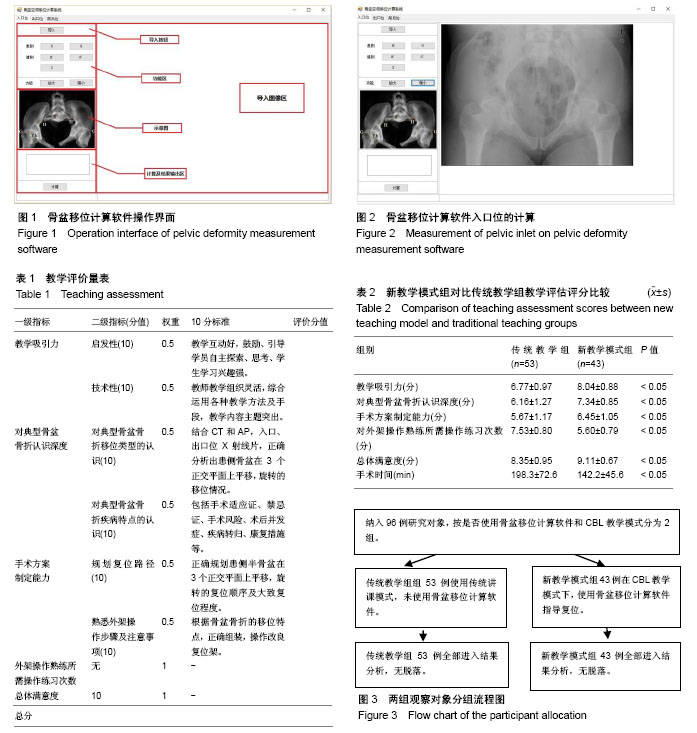| [1] Breuil V, Roux CH, Carle GF. Pelvic fractures: epidemiology, consequences, and medical management. Curr Opin Rheumatol.2016;28(4):442-447.[2] Jr PJ. Pelvic open fractures. Clin Orthop Relat Res.1980;151 (151):41.[3] Naqvi G, Johansson G, Yip G, et al. Mechanisms, patterns and outcomes of paediatric polytrauma in a UK major trauma centre. Ann R Coll Surg Engl.2016; 99(1):1-7.[4] Sharpe JP, Magnotti LJ, Gobbell WC, et al. Impact of early operative pelvic fixation on long-term self-reported outcome following severe pelvic fracture. J Trauma Acute Care Surg. 2017;82(3):444-450. [5] Bellabarba C, Ricci WM, Bolhofner BR. Distraction external fixation in lateral compression pelvic fractures. J Orthop Trauma. 2000;20(20):7-14.[6] Jr RM, Nork SE, Mills WJ. Percutaneous fixation of pelvic ring disruptions. Clin Orthop Related Res. 2000;375(375):15-29.[7] Matta JM, Yerasimides JG. Table-Skeletal Fixation as an Adjunct to Pelvic Ring Reduction. J Orthop Trauma. 2007;21(9):647-656.[8] Sagi HC, Militano U, Caron T, et al. A comprehensive analysis with minimum 1-year follow-up of vertically unstable transforaminal sacral fractures treated with triangular osteosynthesis. J Orthop Trauma. 2009;23(5):313-319.[9] Lefaivre KA, Starr AJ, Barker BP, et al. Early experience with reduction of displaced disruption of the pelvic ring using a pelvic reduction frame. J Bone Joint Surg Br.2009;91(9):1201-1207.[10] Lefaivre KA, Blachut PA, Starr AJ, et al. Radiographic displacement in pelvic ring disruption: reliability of 3 previously described measurement techniques. J Orthop Trauma. 2014;28(3):160-166.[11] Hsu JM, Yadev S, Faraj S. Controlling hemorrhage in exsanguinating pelvic fractures: Utility of extraperitoneal pelvic packing as a damage control procedure. Int J Crit Illn Inj Sci. 2016; (3):148-152.[12] Osvaldo C, Di FE, Anna M, et al. Efficacy of extra-peritoneal pelvic packing in hemodynamically unstable pelvic fractures, a Propensity Score Analysis. World J Emerg Surg. 2016;11(1):22.[13] Jang JY, Shim H, Jung PY, et al. Preperitoneal pelvic packing in patients with hemodynamic instability due to severe pelvic fracture: early experience in a Korean trauma center. Scand J Trauma Resusc Emerg Med. 2016;24(1):3.[14] 杨兴海,肖建如,沈宏亮,等. 骨科临床教学中CBL教学模式的应用体会[J]. 医学信息旬刊,2011, 24(9):4522-4522.[15] Chen JH, Sun J, Lu LR. Case-based learning (CBL) method in clinical teaching. China Higher Med Educ. 2011.[16] Duysenbi S, Zhu X, Qin H, et al. Application of CBL Teaching Method in Neurosurgery 3. 17. Clinical Practice Teaching. China Contin Med Educ. 2018.[17] Huang W, Zheng J. Application and experience of CBL teaching model in clinical teaching of neurology. Chongqing Med. 2010.[18] 施健,林勇,施斌,等. CBL教学模式在消化内科临床教学中的应用探讨[J]. 中国高等医学教育,2012,26(7):121-122.[19] Gade S, Chari S. Case-based learning in endocrine physiology: an approach toward self-directed learning and the development of soft skills in medical students. Am J Phys Adv Phys Educ.2013;37 (4):356-360.[20] Rengier F, Mehndiratta A, Von TH, et al. 3D printing based on imaging data: review of medical applications. Int J Comput Assist Radiol Surg. 2010;5(4):335-341.[21] Tack P, Victor J, Gemmel P, et al. 3D-printing techniques in a medical setting: a systematic literature review. Biomed Eng Online. 2016;15(1):115.[22] 李萌,邱裕生,马兴,等.3D打印技术及典型病例数据库在骨科教学中的应用[J]. 中国医学教育技术,2016,30(1):94-97.[23] 李忠海,唐家广,王华东,等.3D 打印技术在骨科临床教学中的应用初探[J]. 中国医学教育技术,2016, 30(2):198-200.[24] Yin L, Wang Z, Hospital U. Computer aided design of 3D printing combined with hemi pelvic replacement surgery. Modern Clin Nurs. 2017.[25] Baskaran V, Štrkalj G, Štrkalj M, et al. Current applications and future perspectives of the use of 3D printing in anatomical training and neurosurgery. Front Neur. 2016.[26] Li C, Kui C, Lee E, et al. The role of 3D printing in anatomy education and surgical training: A narrative review. Anat. 2014;(224):739-759.[27] 魏新旺,杨志,姚军,等. 3D打印技术在骨盆骨折修复中的应用[J]. 中国组织工程研究, 2015,19(44):7163-7166.[28] Wang DW, Zhao YW, Orthopedics DO. Application progress of 3D printing in the diagnosis and therapy of pelvic fracture. J Traumat Surg. 2018.[29] Han K, Park J, Yoon J, et al. A 3D-printing bone model for surgical planning of total hip replacement after failed triple pelvic osteotomy. J Vet Clin. 2017;34(6):463-466. |

